Welcome to the thrilling world of mountain biking! It’s a sport filled with benefits like keeping fit, finding new places, and making friends. No matter if you’re just starting or want to get better, knowing the best tips and techniques can greatly improve your biking adventures.
Starting out in mountain biking can bring up many questions. You might wonder what bike you should get or how to stay safe on trails. But as you keep riding, you’ll start to enjoy it more and feel more confident. Remember, learning to mountain bike takes time, but it’s worth it.
In this article, we’ll share important tips on picking the right gear, handling difficult paths, and getting good at advanced mountain biking moves. With some prep and eagerness to learn, you’ll soon be confidently riding those trails!
Introduction to Mountain Biking
Mountain biking started in California in the 1980s. It has a rich history. Cyclists developed special techniques and bikes for off-road. These innovations created different mountain biking styles. People today still enjoy them. It’s important for beginners to learn about the types of mountain biking.
If you’re new, try cross-country mountain biking. It’s easy to start with and takes you through lovely places. You’ll see amazing views and improve your stamina. For those who like a mix of challenges, Enduro or all-mountain biking is great. It includes climbing, going downhill, and technical parts. Downhill mountain biking is all about speed and steep slopes. It’s thrilling. You use heavy bikes and special gear for it.
Mountain biking can be tough, especially for beginners. Crashes might happen as you learn. But, don’t worry. Your skills and confidence will grow. Starting this sport is an exciting adventure. Make sure to learn about safety. Wearing protective gear is vital on tricky trails.
E-bikes make mountain biking more accessible. They help on tough trails. This is an inviting option for newcomers. Knowing the different styles helps choose the best one for you. Mountain biking is an exciting sport with something for everyone.
| Type of Mountain Biking | Description | Best for |
|---|---|---|
| Cross-Country | Focuses on endurance, covering long distances with varied terrain. | Beginners, scenic riders |
| Enduro | Combines climbing and descending with technical features. | Intermediate, adventure seekers |
| Downhill | Embraces speed and gravity with steep descents on specially designed bikes. | Adrenaline junkies, skilled riders |
Choosing the Right Mountain Bike
Selecting the right mountain bike greatly affects how you ride. It’s key to know the differences between bikes. There are two main types: the hardtail and the full-suspension. Each type is good for different terrains and riding styles, important for choosing your bike.
Bike Types: Full-Suspension vs Hardtail
A full-suspension bike has shocks at the front and back. This setup provides a smooth ride on tough trails. It’s perfect for rough landscapes and steep downhills. People love it for its comfort and stable handling in enduro and downhill riding.
A hardtail bike lacks rear suspension, making it lighter and better for climbing. It’s great for cross-country rides where speed matters. This bike feels more responsive, ideal for easy trails and new riders gaining confidence.
Finding the Correct Frame Size
Finding the right frame size is crucial for comfort and control. The wrong size can cause discomfort and handling problems. Try out different sizes to find what works best, impacting your control and efficiency on trails.
Also think about wheel size and frame material. People choose between 27.5-inch and 29-inch wheels. Taller riders might prefer 29-inch for better grip, whereas 27.5-inch suits others for its adaptability. Frame material matters too, with carbon offering lightness and strength, and aluminium being budget-friendly and shock-absorbent. Your personal preference will guide you. For more advice, visit this resource.
Essential Gear for Mountain Biking
Selecting the right gear is crucial for safety and fun on the trails. Protective gear keeps you safe and boosts your performance. The right clothes make the ride enjoyable, letting you focus on the adventure.
Protective Equipment: Helmets, Pads, and More
Your helmet is your first line of defence. It helps protect your head if you fall. Elbow pads and knee pads are important for protection on downhill trails. Gloves improve your grip and protect your hands if you fall.
Sunglasses or protective eyewear keep dust and debris out of your eyes. A hydration pack keeps you hydrated and holds essentials like a repair kit and snacks. Always include a multi-tool and a first aid kit in your gear.
Clothing: Dressing for the Trails
Wearing the right clothes makes rides more comfortable. Choose lightweight fabrics that keep you dry. Wearing layers lets you adjust to changes in the weather. A waterproof jacket is good to have for rain.
Choose the right shoes for your ride. Wear flat shoes with grippy rubber for flat pedals. Or, choose shoes with cleats for better power on the pedals. Include extra layers, sun cream, and SPF lip balm for protection against UV rays.
How to Ride a Mountain Bike: Techniques for Success
Mastering mountain biking techniques is key for enhancing control and performance. Proper body positioning boosts balance. It is vital during descents and when moving around obstacles. Learning effective braking is also important. It boosts your confidence over tough terrains. Check our latest article explaining how to set up your downhill bike for racing.
Body Positioning and Centre of Gravity
Right body positioning greatly enhances control over rough trails. Keeping a low centre of gravity helps maintain balance. It lets you move smoothly with your bike. When standing on the pedals, bend your arms and knees slightly.
This stance is called the attack position. It mimics a natural suspension, absorbing bumps well. Good weight distribution over the bike is another critical skill. It increases tire grip and improves your performance during tricky manoeuvres and steep descents.
Braking Techniques for Balance and Control
Braking rightly is essential for control and balance. Using a single finger for the brakes allows precise control. Balancing the braking force between the front and rear helps avoid skidding. When turning, keep your weight over the bike, lower the outside pedal, and adjust your arms.
This technique ensures better traction and smoother riding through challenging paths. It allows for a more enjoyable and safe ride on any terrain.
| Technique | Description | Benefits |
|---|---|---|
| Body Positioning | Adopt the attack position for descents | Improves stability and shock absorption |
| Weight Distribution | Balance weight for optimal tire grip | Enhances control and performance |
| Braking Techniques | Use one finger for better brake control | Provides balance and prevents skidding |
| Cornering | Lean the bike, drop the outside pedal | Maintains traction and enhances manoeuvrability |
Navigating Different Terrain
Riding on a mountain bike is thrilling yet tough. One must learn various skills to manage different paths. This includes sharp corners and steep climbs. Getting good at climbing and turning is key to doing well and staying safe on mountain bike trails.
Climbing Techniques for Steep Hills
When you come to a steep hill, how you spread your weight matters a lot. Stay forward on the bike. This helps your back wheel grip better. You also need to pick the right gear, with lower ones making it easier to go up. Keeping up your speed helps with tricky parts. Practicing on different slopes makes you better and boosts your confidence on tough climbs.
Cornering on Trails Safely
Turning safely on trails needs special skills. Lean into corners to keep balanced and in control. Brake before you start to turn. This makes the bike more stable. Planning your turns by visualising the trail ahead improves your skills. Taking part in skills clinics is great for practicing turning. This builds your confidence and makes biking on trails safer.
It’s important to know the different terrains. There are many types, like narrow paths, wider ones, and graded roads. Each has its own set of challenges. Using trail apps or recommendations from local bike shops can help you find good routes that suit your abilities.
| Trail Type | Description | Difficulty Rating |
|---|---|---|
| Singletrack | Narrow dirt paths, typically for one rider | Varies (IMBA ratings) |
| Doubletrack | Wider paths allowing two riders side by side | Generally less technical |
| Fire Roads | Graded dirt roads for vehicle access | Easy to Intermediate |
| Rock Gardens | Technical features necessitating balance and skill | Difficult |
| Slickrock Trails | Rock slabs with painted-dash lines | Advanced |
By learning these climbing and turning skills, riders can get better and tackle any terrain with more confidence. For more advice on dealing with tough mountain bike terrain, check out this resource.
Preparation for Your First Ride
Getting ready for your first mountain bike ride means planning your route and knowing the weather. A good plan increases safety and fun, making a first-time challenge an exciting adventure.
Planning Your Route in Advance
Start by learning all about your trail. Look at the uphills and downhills and spot any dangers. This helps you move smoothly and avoid surprises.
- Choose beginner-friendly trails that suit your skill level.
- Study a map or GPS of the area to gain an awareness of the twists and turns.
- Learn some basic riding skills to improve your confidence, including balance and braking techniques.
Understanding Weather Conditions
The weather can change quickly in the mountains. Checking the forecast helps you dress right and stay comfortable. Layers work best to help you adjust to different temperatures.
- Monitor humidity and wind conditions, as they can significantly affect your experience.
- Consider moisture-wicking fabrics to keep your body dry during the ride.
- Be ready for unexpected weather changes by bringing the right gear with you.
Conclusion
As we wrap up our look at mountain biking, let’s remember what makes this sport exciting and safe. Choosing the right bike is key. It should match your height, weight, and how well you ride. Wearing protective gear, like helmets and gloves, is also essential. These beginner tips are the building blocks for a great adventure. Plus, the growing community and better e-bikes make biking more accessible for everyone.
Start on easy trails to gain confidence and tackle harder ones as you improve. Safety is key, so always wear a helmet to protect your head and try not to ride alone. Before heading out, pack water, snacks, and a first aid kit. This preparation makes your adventure safer and more fun.
Mountain biking offers great rewards, especially in beautiful areas like Northern Ireland. There, you can find trails for all skills. Local bike shops can show you the best bikes for starting out. Enjoy the thrill of mountain biking. With time and practice, you’ll master the trails!
FAQ
What type of mountain bike do I need as a beginner?
Start with a hardtail mountain bike if you’re new. They’re less costly and great for uphill rides. For bumpy routes, a full-suspension bike offers better comfort and absorbs shocks well.
Is it safe to ride mountain bikes?
Riding mountain bikes is safe with the right precautions. Always have a helmet and protective pads on. Pick trails matching your riding skills.
How can I improve my mountain biking skills?
Keep practising to get better at mountain biking. Work on your stance, brake use, and handling various grounds. Joining a group can give you advice and motivation from others.
What should I wear for mountain biking?
Opt for comfy, breathable outfits for easy moving. It’s smart to layer up, as weather might change. Gloves and strong shoes are good for grip and to keep you safe.
How do I prepare for my first mountain bike ride?
Know your trail before you start. Check its layout, risks, and length. Look at the weather to dress right and pack water, snacks, and a repair kit.
What are the different styles of mountain biking?
There are many types like cross-country, enduro, and downhill riding. Pick what you like and what fits your body fitness. That way, you’ll have more fun biking.
What is the importance of frame size in mountain biking?
The right frame size makes riding comfortable and effective. A wrong-sized bike can cause pain and make it hard to handle. Visit a bike shop to get the perfect size.
What techniques should I focus on when mountain biking?
Focus on balancing well, braking skillfully, and shifting your weight on turns. These tips will better your riding and boost your trail confidence.

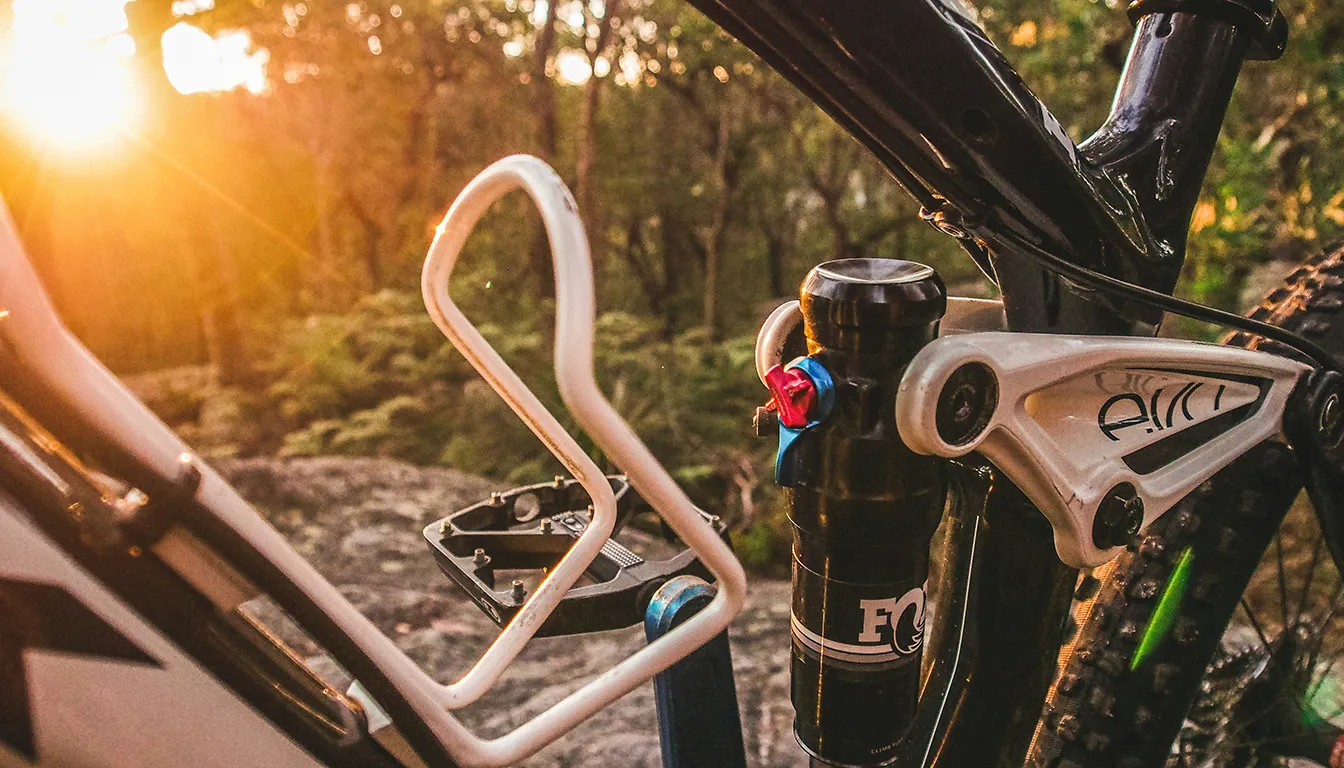
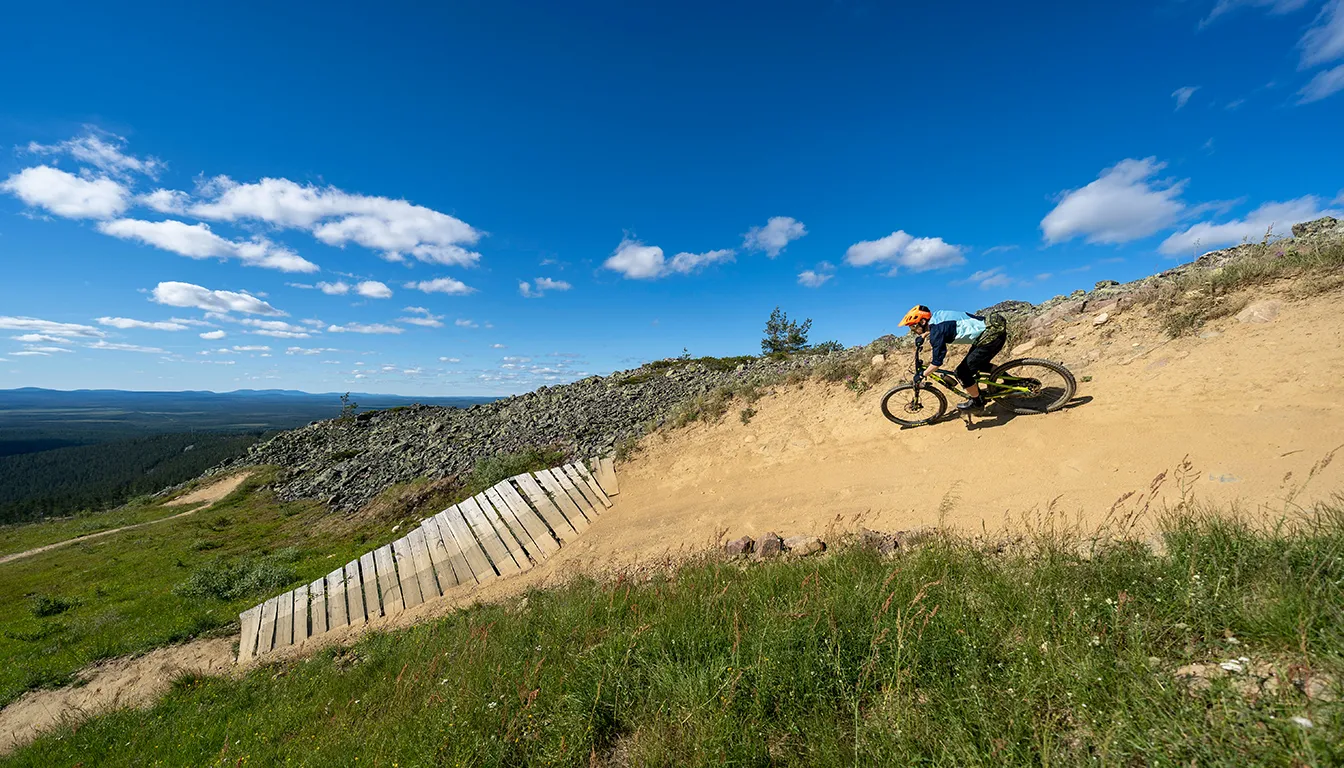
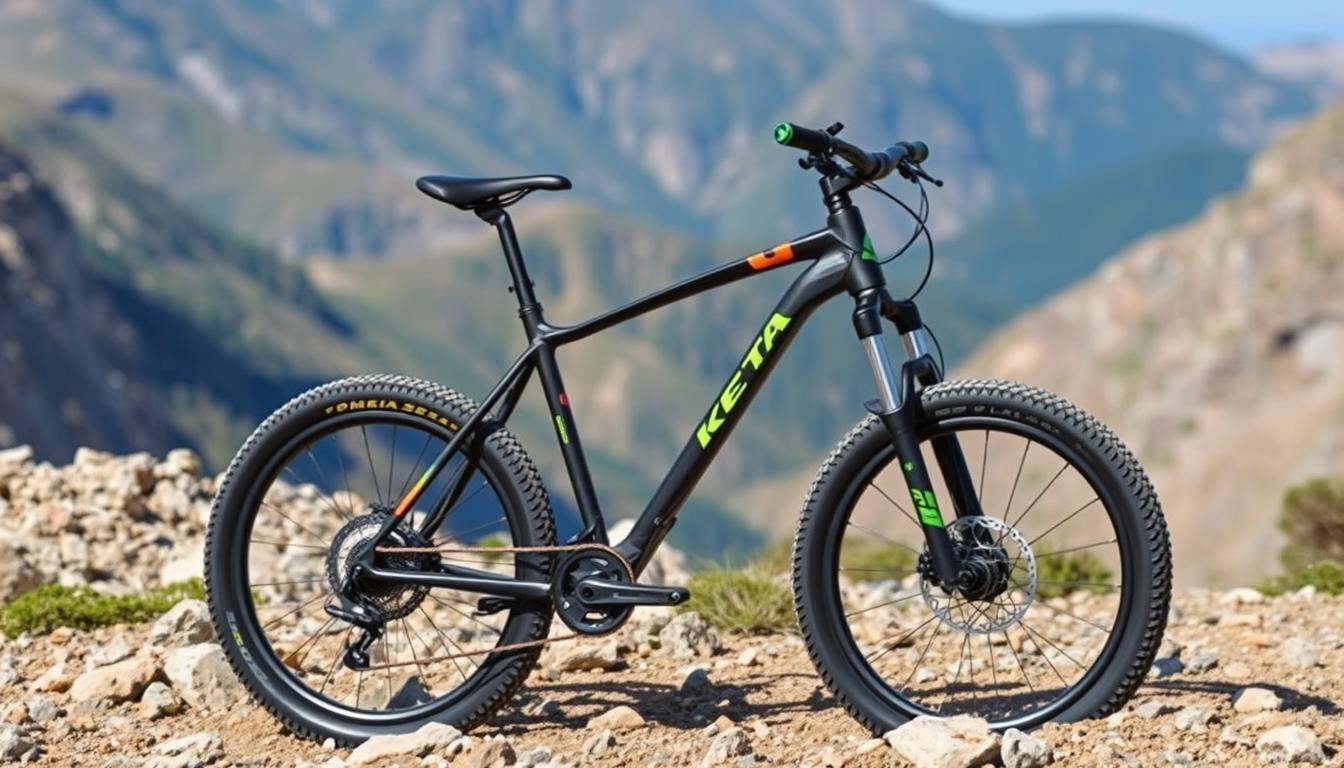
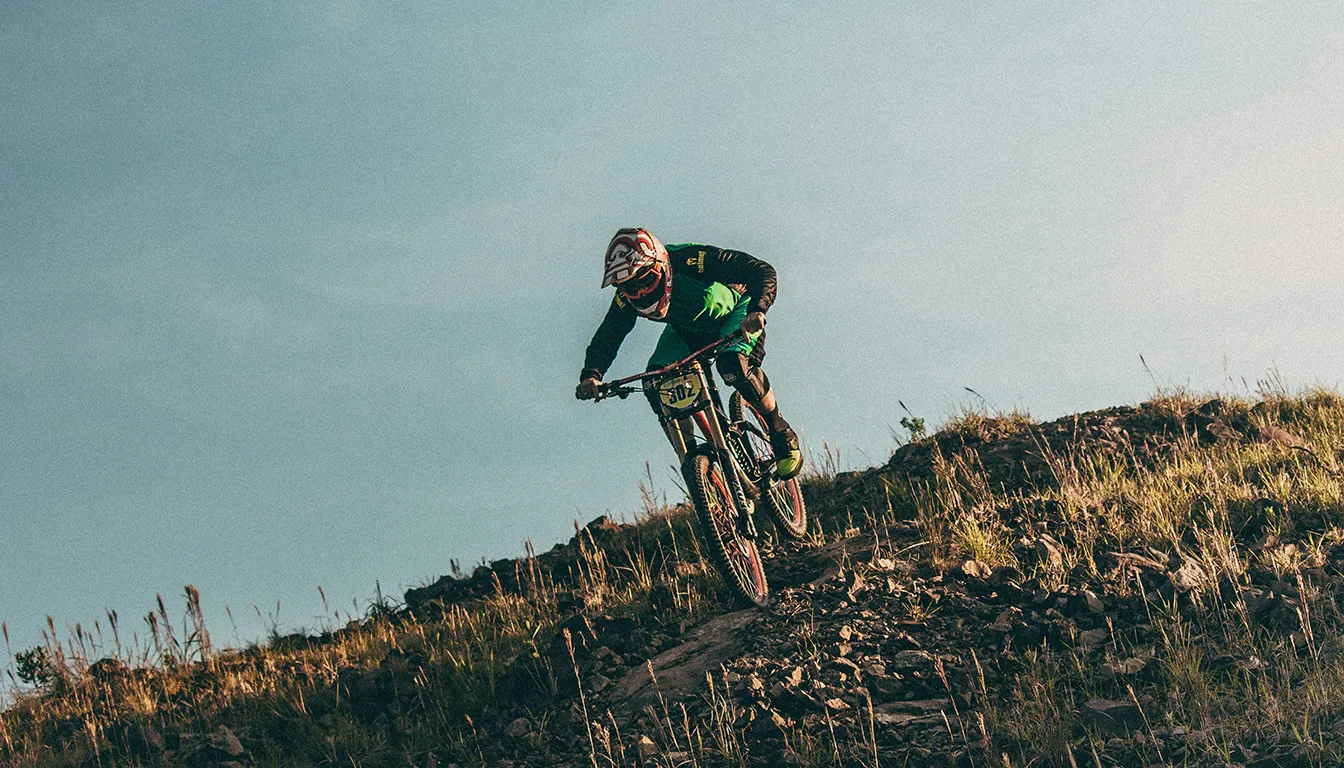
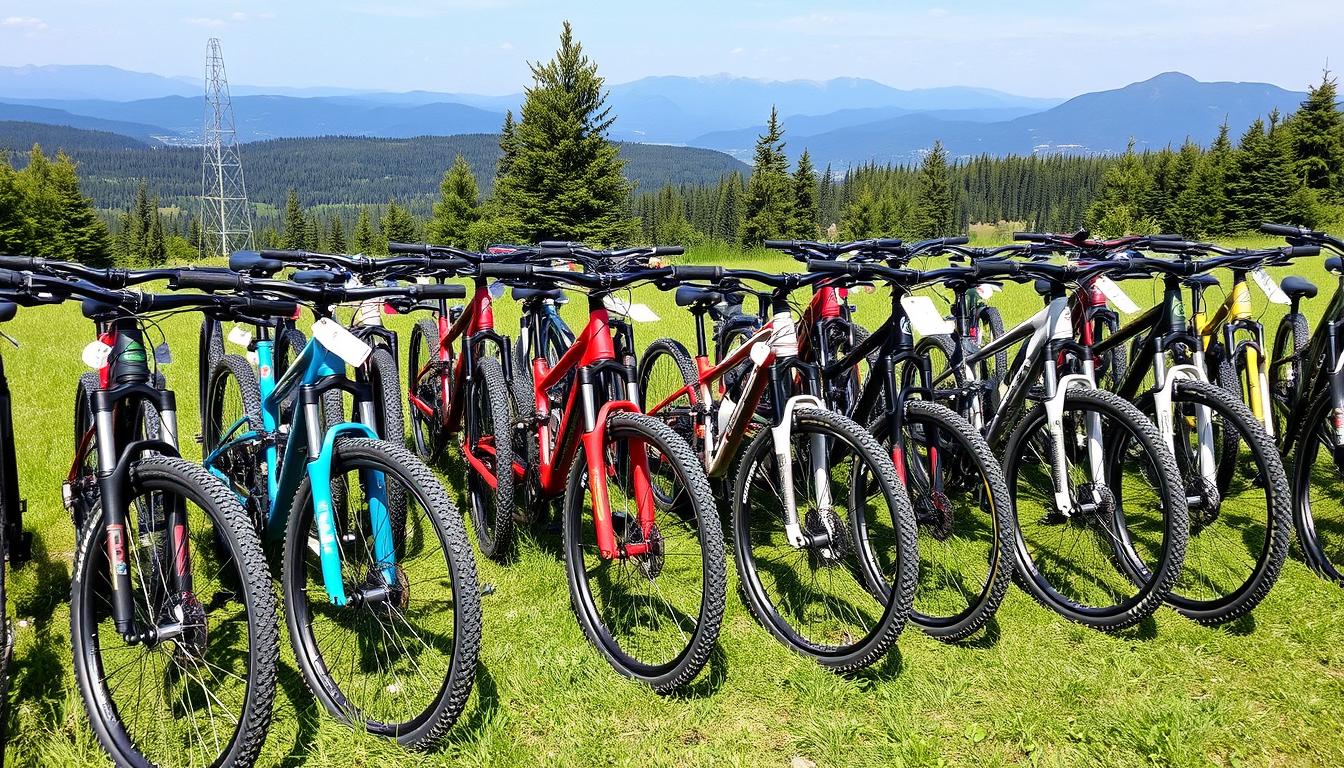
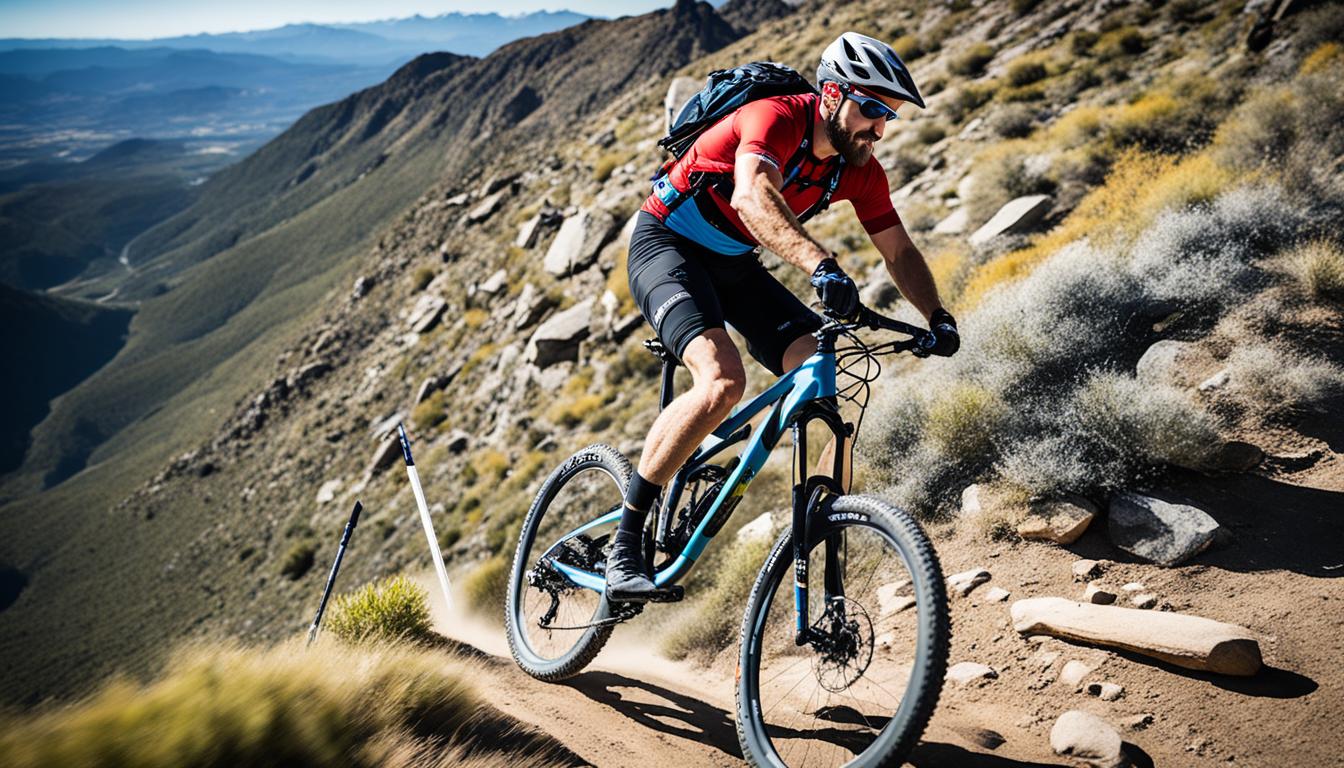
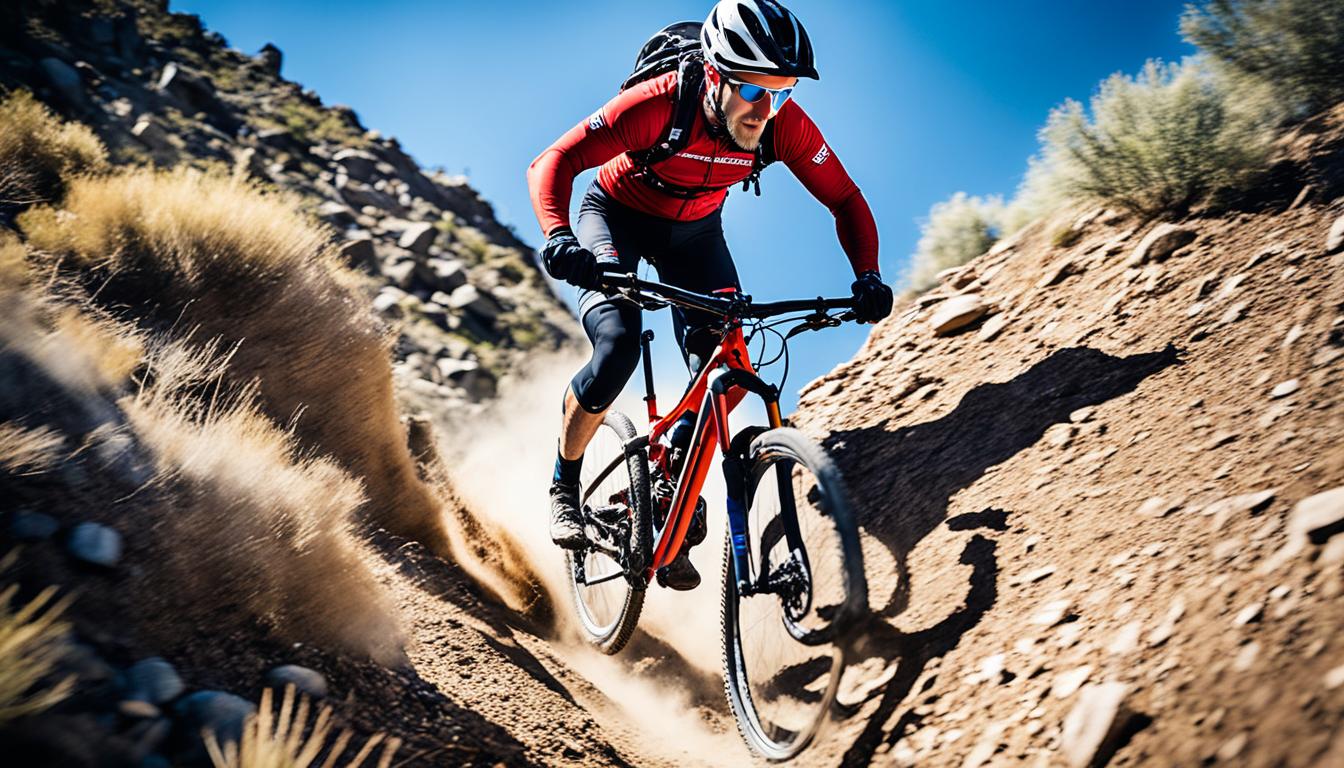

9 thoughts on “How to Ride a Mountain Bike: Essential Tips for All Levels”